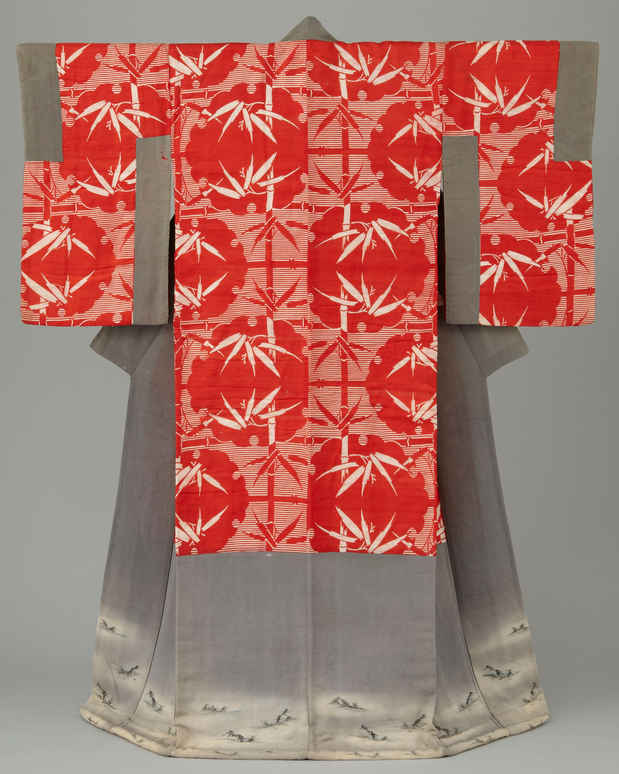Beniitajime – The Dyeing Method that Added Color to the Lives of Ordinary People
The Museum of Kyoto

Meiji Period Patterned Undergarment
This event has ended.
Beniitajime is a method of dyeing widely used from the latter half of the Edo period to the Meiji period. It involves placing the fabric to be dyed between template boards and holding it in place using a fastening frame. Then, red dye is poured into the grooves etched into the template boards, to form patterns. Patterns such as flowers and butterflies dyed into undershirts and undergarments added color to the wardrobes of the women of the period. Towards the beginning of the Showa period, Beniitajime was superceded by other dyeing methods and advances in design, and discontinued. It is said that almost none of the workers who were involved in the manufacturing process live on today. However, the templates and frames still remain under the ownership of Kyoto prefecture, and the documents are very important in recounting the history of Kyoto’s dyeing industry. This exhibition introduces around 60 examples of tools used in, and undershirts made by, the Beniitajime method, from Kyoto prefecture’s dyeing item collection.
The exhibition is held on the second floor of the Kyoto Culture Museum (“Kyoto Bunka Hakubutsukan”), in the “The treasures and culture of Kyoto” (“Kyo no Shihou to Bunka”) exhibit room.
[Related Events]
There will be a series of lectures on Jun.13 (Sat) and Jul.25 (Sat) in the 3rd floor film theatre.
Please refer to the official site for further details.
Media
Schedule
from April 24, 2015 at 10:00 to July 12, 2015 at 19:30
Opening times: 10:00-19:30 during exhibition period. Open on Apr.27 (Mon) and May.7 (Thurs)